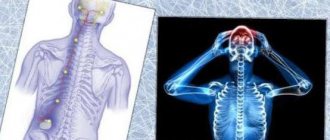General information
The brain contains 25 billion neurons that make up the gray matter. The weight of the organ varies depending on gender. For example, in men its weight is about 1375 g, in women - 1245 g. On average, its share in the total body weight is 2%. At the same time, scientists have found that the level of intellectual development is not related to brain mass. Mental abilities are affected by the number of connections created by the organ. Brain cells are neurons and glia. The former generate and transmit impulses, the latter perform additional functions. There are cavities inside the brain. They are called ventricles. The cranial nerves extend from the organ we are considering to different parts of the human body. They are paired. In total, 12 pairs of nerves depart from the brain. The brain is covered by three membranes: soft, hard and arachnoid. There are spaces between them. They circulate cerebrospinal fluid. It acts as an external hydrostatic environment for the central nervous system and also ensures the removal of metabolic products. The membranes of the brain differ in their structure and the number of vessels passing through them. However, they all provide protection for the contents of the upper part of the skull from mechanical damage.
Treatment
The development of cerebral and focal neurological symptoms in thrombosis of the cerebral veins and venous sinuses is based on changes in brain tissue and the development of intracranial hypertension. This combination is potentially dangerous and may be associated with an unfavorable outcome of the disease.
Therefore, it is necessary to carry out complex treatment, including pathogenetic (recanalization of venous sinuses) and symptomatic therapy (correction of intracranial hypertension, anti-inflammatory treatment).
The main goal of treatment for thrombosis of the cerebral veins and venous sinuses is to restore their patency. There are indications of the successful use of thrombolysis, but the number of hemorrhagic complications increases significantly. Currently, the drugs of choice are anticoagulants, in particular low molecular weight heparins.
According to various studies, the use of direct anticoagulants in the acute period of thrombosis of the cerebral veins and venous sinuses improves the outcome and reduces the risk of death and disability. According to ISCVT, 80 out of 624 patients with thrombosis of the cerebral veins and venous sinuses received low molecular weight heparins. 79% of these patients recovered, 8% had mild symptoms, 5% had significant neurological impairment, and 8% of patients died. These data indicate the effectiveness and safety of low molecular weight heparins in the acute period of thrombosis of the cerebral veins and venous sinuses.
Important Why does insomnia occur and how can you fight it?
In cases of infectious thrombosis of the venous sinuses, antibacterial therapy should be carried out using high doses of broad-spectrum antibiotics, such as cephalosporins (ceftriaxone 2 g/day IV), meropenem, ceftazidine (6 g/day IV), vancomycin (2 g /day i.v.).
The primary source of infection should be revised, and surgical methods should be used if necessary. It is not advisable to perform surgical treatment before prescribing drug therapy. First of all, you need to carry out antibiotic therapy. The decision to undergo surgical intervention on the ear or sinus is possible when control of the infection is achieved. There is no consensus on the feasibility and safety of anticoagulant therapy, although most authors adhere to the management of such patients using low molecular weight heparins.
At the end of the acute period of thrombosis of the cerebral veins and venous sinuses, it is recommended to prescribe indirect oral anticoagulants (acenocoumarol, warfarin) with maintaining the international normalized ratio (INR) within 2-3. In this case, direct anticoagulants are used until the INR reaches target values.
In case of thrombosis of the cerebral veins and venous sinuses during pregnancy, the administration of indirect anticoagulants should be avoided due to their teratogenic properties and the possibility of penetration through the placental barrier. In such cases, treatment with direct anticoagulants is recommended.
Currently, there are no studies clearly regulating the duration of use of oral anticoagulants. According to the EFNS recommendations (2006), indirect anticoagulants should be used for 3 months. with secondary thrombosis of the cerebral veins and venous sinuses, which developed in the presence of a so-called transient risk factor, within 6-12 months. in patients with idiopathic thrombosis and in “minor” thrombophilic conditions, such as deficiency of proteins C and S, heterozygous mutation of Leiden factor or mutations in the prothrombin gene (G20210A). Lifelong anticoagulant therapy is recommended for patients with recurrent venous sinus thrombosis, as well as for congenital thrombophilic conditions (homozygous Leiden factor mutation, antithrombin III deficiency).
In addition to basic therapy, measures should be taken to prevent complications such as seizures and intracranial hypertension. These conditions require the prescription of anticonvulsants, mechanical ventilation in hyperventilation mode with positive expiratory pressure, and the administration of osmotic diuretics. However, it should be remembered that excessive dehydration, in turn, worsens the rheological properties of the blood, thereby promoting further thrombus formation.
The effectiveness of glucocorticoids for cerebral edema resulting from thrombosis of the cerebral veins and venous sinuses has not been proven. In some cases, in severe forms of CVST, complicated by dislocation of brain structures, the issue of decompressive hemicraniotomy, which is a life-saving operation, may be considered.
Spider MO
Arachnoidea encephali is separated from the dura mater by the capillary network of the subdural space. It does not go into the depressions and grooves, like the vascular one. However, the arachnoid membrane spreads over them in the form of bridges. As a result, a subarachnoid space is formed, which is filled with clear fluid. In some areas, mainly at the base of the brain, there is particularly good development of the subarachnoid spaces. They form deep and wide containers - tanks. They contain cerebrospinal fluid.
Prevention, complications, prognosis
It is very important, if a person notices any changes or pain in his condition, to consult a doctor in time, because the sooner this disease is identified, the sooner and faster doctors will be able to help the sick patient. Therefore, there is no need to wait until the last moment, because waiting can often lead to a stroke or cerebral edema, or death. Other complications include blurred vision, deterioration in hormone production, possible formation of cysts in the lining of the brain and other cardiovascular diseases in humans
Other complications include blurred vision, deterioration in hormone production, possible formation of cysts in the lining of the brain and other cardiovascular diseases in humans.
Of course, the prognosis for recovery is influenced by the stage of the disease at which a person is; it all depends on how quickly the person turned to specialists. In any case, the mortality rate usually does not exceed twenty percent in advanced stages.
So, in order not to undergo such a difficult test, you need to adhere to preventive measures and check regularly with a doctor.
Vascular (soft) MO
Pia mater encephali directly covers the brain surface. It is presented in the form of a transparent two-layer plate, which extends into the cracks and grooves. The vascular MO contains chromatophores—pigment cells. Especially many of them have been identified at the base of the brain. In addition, there are lymphoid, mast cells, fibroblasts, numerous nerve fibers and their receptors. Parts of soft MO accompany arterial vessels (medium and large), reaching arterioles. Between their walls and the shell there are Virchow-Robin spaces. They are filled with cerebrospinal fluid and communicate with the subarachnoid space. Elastic and collagen fibrils are thrown through them. Vessels are suspended from them, through which conditions are created for their displacement during pulsation without affecting the brain matter.
It is characterized by special strength and density. It contains a large number of elastic and collagen fibers. The hard shell is formed by dense connective tissue.
Diagnostic methods
There are no pathogenetic symptoms of cavernous sinus thrombosis. This makes diagnosis difficult. It is necessary to distinguish the disease from sepsis, damage to the sigmoid sinus, retrobulbar hemorrhage, sarcoma and glioma of orbital tissue. To make a diagnosis, the following procedures are necessary:
- Examination and history taking.
- Checking neurological status. In this case, depression of the cranial and pupillary reflex, exophthalmos, hypoesthesia, and bulbar disorders are noted. Central paresis, strabismus, and positive meningeal signs are possible.
- A consultation with an ophthalmologist is indicated. The specialist can detect loss of visual fields, chemosis, blurred boundaries of the optic nerve head, and dilation of the venous vessels of the fundus.
- A blood test shows neutrophilic leukocytosis, anemia and increased ESR, thrombocytopenia.
- When collecting a lumbar puncture, an increased level of protein, leukocytes and red blood cells in the cerebrospinal fluid is detected. In a third of patients, this examination reveals nothing.
- CT scan reveals narrowing of the cerebral ventricles and cisterns, areas of increased density. The thrombus can be visualized using contrast.
- MRI is the most informative examination.
You can find out the addresses of diagnostic centers in the capital through the website “Unified CT/MRI/Ultrasound Recording Center in Moscow”. Here is the price list for diagnostics and patient reviews.
Peculiarities
The hard shell lines the inside of the cranial cavity. At the same time, it acts as its internal periosteum. In the area of the foramen magnum in the occipital part, the dura mater passes into the dura mater of the spinal cord. It also forms the perineural sheath for the cranial nerves. Penetrating into the holes, the shell fuses with their edges. The connection with the bones of the arch is fragile. The shell is easily separated from them. This causes the possibility of epidural hematomas. In the area of the cranial base, the shell fuses with the bones. Particularly strong fusion is observed in the areas where the elements connect to each other and the exit of the cranial nerves from the cavity. The inner surface of the shell is lined with endothelium. This determines its smoothness and pearlescent hue. In some areas there is a splitting of the shell. Here its processes are formed. They protrude deeply into the cracks that separate parts of the brain. Triangular canals are formed in the areas where the processes originate, as well as in the places of attachment to the bones of the internal cranial base. They are also covered with endothelium. These channels are the sinuses of the dura mater.
It is considered the largest process of the shell. The sickle penetrates the longitudinal fissure between the left and right hemispheres, without reaching the corpus callosum. It is a thin sickle-shaped plate in the form of 2 leaves. The superior sagittal sinus lies in the split base of the process. The opposite edge of the sickle has a thickening also with two petals. They contain the inferior sagittal sinus.
Nerves
The dura mater is innervated by various branches. In particular, branches of the vagus and trigeminal nerves approach it. In addition, innervation is provided by sympathetic fibers. They enter the hard shell in the thickness of the outer wall of blood vessels. In the area of the cranial anterior fossa, the dura mater receives processes from the optic nerve.
Its branch, the tentorial, provides innervation to the cerebellar tentorium and the falx cerebri. The cranial middle fossa is supplied by the meningeal process of the maxillary and part of the mandibular nerves. Most of the branches lie along the vessels of the membrane. In the tentorium cerebellum, however, the situation is somewhat different. There are few vessels there, and the branches of the nerves are located in it independently of them.
Important Newborn sleeps poorly: causes of sleep disturbances day and night
Connection with elements of the cerebellum
In the anterior part, the sickle is fused with the cockscomb on the ethmoid bone. The posterior region of the process at the level of the occipital internal protrusion connects with the tentorium of the cerebellum. He, in turn, hangs over the cranial fossa like a gable tent. It contains the cerebellum. Its tentorium penetrates the transverse fissure in the cerebrum. Here it separates the cerebellar hemispheres from the occipital lobes. There are irregularities on the leading edge of the tentorium. Here a notch is formed, to which the brain stem adjoins in front. The lateral portions of the tentorium fuse with the edges of the groove in the posterior sections on the transverse sinus of the occipital bone and with the upper edges of the pyramids on the temporal bones. The connection extends to the posterior processes of the wedge-shaped element in the anterior parts on each side. The cerebellar falx is located in the sagittal plane. Its leading edge is free. It separates the cerebellar hemispheres. The posterior part of the falx is located along the occipital internal crest. It extends to the edge of the large hole and covers it with two legs on both sides. At the base of the falx there is the occipital sinus.
Clinical picture
Symptoms are variable. It depends on the rate of progression, the age of the patients and etiofactors. Includes:
- Headache without specific characteristics. If the root cause is infection, cephalalgia intensifies in a horizontal position.
- Nausea and vomiting.
- In some cases, hyperthermia and fever.
- Ophthalmological manifestations include pain when pressing on the periorbital areas, swelling, and tenderness of the eyeball. Possible bilateral or unilateral exophthalmos, chemosis, and sudden loss of vision.
- Swelling of the temporo-frontal region and cheeks, its redness or pallor.
- Violation of general condition. It can range from stunning to coma.
- Focal neurological symptoms include sensory aphasia, monoparesis, paralysis, generalized or focal epileptic seizures.
- Drooping of the upper eyelid.
- Restriction of eyeball movements.
- Loss of sensitivity in the area where the cranial nerves are innervated.
- Smoothness of the nasolabial fold.
- Various forms of strabismus.
Sinuses of the dura mater
They are sinuses formed as a result of the splitting of the dura mater into two leaves. The sinuses of the brain act as peculiar vessels. Their walls are formed by plates. The sinuses and veins of the brain have a common feature. Their inner surface is lined with endothelium. Meanwhile, the sinuses of the brain and blood vessels differ directly in the structure of the walls. The latter are elastic and include three layers. When cut, the lumen of the veins collapses. The walls of the sinuses, in turn, are stretched tightly. They are formed by fibrous dense connective tissue, which contains elastic fibers. When cut, the lumen of the sinuses gapes. In addition, there are valves in the venous vessels. In the cavity of the sinuses there are several incomplete bars and wavy bars. They are covered with endothelium and spread from wall to wall. In some sinuses these elements are distinguished by significant development. There are no muscle elements in the walls of the sinuses. The sinuses of the dura mater have a structure that allows blood to flow freely under the influence of its gravity, regardless of fluctuations in intracranial pressure.
The following sinuses of the dura mater are distinguished:
- Sinus sagittalis superior. The superior sagittal sinus runs along the superior edge of the greater falx, from the cock's crest to the occipital internal protuberance.
- Sinus sagittalis inferior. The inferior sagittal sinus is located in the thickness of the free edge of the greater falx. It flows into the sinus rectus posteriorly. The connection is located in the area where the lower edge of the greater falx fuses with the anterior edge of the cerebellar tentorium.
- Sinus rectus. The straight sinus is located in the splitting of the tentorium along the line of attachment of the large falx to it.
- Sinus transversus. The transverse sinus is located at the origin of the tentorium cerebellum from the membrane of the brain.
- Sinus occipitalis. The occipital sinus lies at the base of the cerebellar falx.
- Sinus sigmoideus. The sigmoid sinus is located in the groove of the same name on the inner cranial surface. It looks shaped like the letter S. In the area of the jugular foramen, the sinus becomes the internal vein.
- Sinus cavernosus. The paired cavernous sinus is located on both sides of the sella turcica.
- Sinus sphenoparietalis. The sphenoparietal sinus is adjacent to the posterior free area on the lesser wing of the sphenoid bone.
- Sinus petrosus superior. The superior petrosal sinus is located at the superior edge of the temporal bone.
- Sinus petrosus inferior. The inferior petrosal sinus is located between the clivus of the occipital and the pyramid of the temporal bones.
Violations of structures
Pathologies of these choroid plexuses arise due to their blockage, which in turn is provoked by thrombosis, thrombophlebitis or compressive neoplasm of intracranial veins and arteries.
Inflammation of the structures of the main human organ can appear when infectious agents penetrate into the bloodstream (all kinds of unconnected vascular substrate, solid, liquid or vapor, circulating through the bloodstream, uncharacteristic in a normal state, capable of provoking blockage of an artery at a fairly large distance from the site of occurrence). The pathological agent can enter the meninges and the vascular beds of the head bone tissue on its surface. In this case, symptoms of peak manifestations of meningitis and other pathologies are likely to appear. In preschool children, a picture of neuropoisoning appears.
In some cases, neurosurgeons can determine damage to the base of the skull by seeing signs of intense exophthalmos. When a fracture occurs, the integrity of the internal carotid artery, which is in contact with the cavernous duct, is disrupted. The flow of venous blood, penetrating into the ophthalmic veins related to this reservoir, provokes pulsation, obvious hyperemia and protrusion of the apple of the optic organ. This deviation is otherwise called the carotid-cavernous anastomosis, and this is one of the extremely rare pathologies when listening to the skull with a phonendoscope makes it possible to hear the noise of blood flow in the area where the vessels join.
Sinus sagittalis superior
In the anterior sections, the superior sinus anastomoses (connects) with the veins of the nasal cavity. The posterior part flows into the transverse sinus. To the left and right of it there are lateral lacunae communicating with it. They are small cavities located between the outer and inner layers of the dura mater. Their number and size are very different. The lacunae communicate with the cavity of the sinus sagittalis superior. They include vessels of the dura mater and brain, as well as diploic veins.
Channel localization
The sinuses of the dura mater of the brain are classified according to intracranial localization and the presence of intersinus connections. The words “sinus” and “sinus”, as well as “reservoir” are synonymous and mean the same thing.
Superior sagittal sinus
The superior sagittal sinus is characterized by considerable length and complex structure. The falx cerebri is involved in its formation. This is what is called the crescent-shaped plate. It is formed by the dura mater. The process begins from the crest of the ethmoid bone and goes backward along the midline, filling the interhemispheric gap that separates the hemispheres from each other. The groove of the superior sagittal sinus is the base of the falx.
This canal forms numerous lateral lacunae. This is the name given to small cavities that communicate with the venous network of hard leaves.
The superior sagittal sinus is equipped with the following vascular connections:
- The anterior sections of the sinus are connected to the veins of the nasal cavity.
- The middle sections have a connection with the venous vessels of the parietal lobes of the brain.
This vascular reservoir gradually increases in volume and expands. Its posterior section enters the common sinus drainage.
Inferior sagittal reservoir
The inferior sagittal sinus is referred to in the medical literature as sinus sagittalis inferior. It is so called because it is located in the lower segment of the falx. Compared to the upper sinus, it is much smaller in size. Due to numerous venous anastomoses, it is connected to the straight sinus.
Direct sinus
The straight sinus is located at the junction of the falx and tentorium, which covers the cerebellum. Has a sagittal direction. The great cerebral vein flows into it. The blood flow from it is directed towards the transverse venous sinus.
Transverse sinus
The transverse sinus occupies a wide groove of the same name on the surface of the occipital bone. It is located in the area where the cerebellar tentorium extends from the dura mater. It is the largest of all venous reservoirs and continues into the sigmoid venous sinuses.
Sigmoid venous reservoir
The sigmoid sinus occupies sigmoid grooves on both sides, shaped like the letter S. The external cerebral veins are connected to it. At the level of the jugular foramen, the blood flow from the sigmoid canals is directed into the bed of the internal jugular vein.
Cavernous sinus
The cavernous sinus is localized on the sides of the sella turcica, in appearance it resembles a triangle, in the upper part of which the oculomotor nerve is located, in the lateral part there is a branch of the trigeminal nerve. Its anatomy is distinguished by a large number of internal partitions. This explains its other name - cavernous sinus.
The internal part of the structure is occupied by the abducens nerve. Inside the sinus is a section of the internal carotid artery, surrounded by the sympathetic nerve plexus. Paired ophthalmic venous vessels flow into this canal. The sphenoparietal sinuses of the dura mater are associated with it.
The cavernous sinuses are connected by venous branches running along the contours of the sella turcica. Such complex vascular relationships allow the vessels to form a fairly large sinus surrounding the pituitary gland lying in the center of the sella turcica.
A continuation of this sinus are two venous reservoirs surrounding the temporal pyramids above and below. These are called the superior and inferior petrosal sinuses. Connected by numerous venous vessels, the stony sinuses participate in the formation of the main plexus of venous vessels located in the occipital lobe of the brain.
Occipital venous canal
The occipital sinus is located at the base of the falx and the internal crest of the occipital bones. At the top it is connected to a transverse channel. In the lower section, this sinus is divided into two branches that surround the foramen magnum. They are connected to the right and left sigmoid sinuses. The superficial veins of the brain and the vertebral plexus of veins are connected to the occipital sinus.
The sinuses of the brain create a venous confluence, or drain. In Latin, this reservoir of venous blood is called “confluens sinuum”. It is located in the area of the cruciate eminence inside the occipital bone. The flow of venous blood from all intracranial vessels and reservoirs is directed to the jugular vein.
Thus, the structure of the human cerebral venous system is very complex. All venous channels are in one way or another interconnected not only with each other, but also with other cerebral structures.
Sinus transversus
This sinus is the largest and widest. On the inside of the scales of the occipital bone, it corresponds to a wide groove. Next, the sinus transversus becomes the sigmoid sinus. Then it goes into the mouth of the internal jugular vessel. Sinus transversus and Sinus sigmoideus thus act as the main venous collectors. At the same time, all other sinuses flow into the first. Some venous sinuses enter it directly, some indirectly. On the right and left, the transverse sinus continues into the sinus sigmoideus of the corresponding side. The area where the venous sinuses sagittalis, rectus and occipitalis flow into it is called the drain.
Doctors' recommendations for pathologies
The main recommendation of doctors is a timely visit to a specialist to clarify the picture and nature of symptomatic manifestations.
As well as preventing mechanical head injuries and protection from external factors, such as weather conditions. Prevention of brain diseases is possible only if you visit a doctor and get rid of chronic diseases, in particular those that are associated with an increase in the viscosity of hemostasis or stratification of the walls of blood vessels. In addition, it is necessary to treat infectious pathologies in a timely manner; they are the ones that mostly cause deviations.
- Violations of structures
- Treatment of cavernous sinus thrombosis:
- Violations of structures
- Nerves
- Channel localization
- Prevention, complications, prognosis
- Treatment
- Venous sinuses
- Pathology of intracranial sinuses
- Causes
- Vascular (soft) MO
- Sinus transversus
- Connection with elements of the cerebellum
- General information
- Indications and contraindications
Sinus cavernosus
Its other name is cavernous sinus. It received this name due to the presence of numerous partitions. They give the sinus the appropriate structure. The abducens, ophthalmic, trochlear, oculomotor nerves, as well as the carotid artery (internal) along with the sympathetic plexus pass through the cavernous sinus. There is a communication between the right and left side of the sinus. It is presented in the form of the posterior and anterior intercavernous sinus. As a result, a vascular ring is formed in the area of the sella turcica. The sinus sphenoparietalis flows into the cavernous sinus (in its anterior sections).
Causes
The most common cause is infections that cause inflammation of the ear, tonsils, teeth, maxillary sinuses, facial tissues, eyes, as well as septic conditions due to viral, bacterial (including tuberculosis), and fungal infections.
In the absence of infectious diseases, sinus thrombosis occurs under the influence of the following factors:
- traumatic brain injury,
- operations on bones, skull tissues, internal organs,
- intracranial or other tumors,
- puncture of the spinal canal for diagnosis or pain relief,
- toxicosis of the second half of pregnancy with hypertension,
- caesarean section or natural birth,
- taking estrogen drugs (including contraceptives),
- extreme degree of dehydration,
- autoimmune diseases,
- increased blood clotting activity,
- circulatory disorders,
- diabetes.
Additionally
In some areas, the sinuses of the membrane form anastomoses with the external venous vessels of the head with the help of graduates - emissary veins. In addition, the sinuses communicate with the diploic branches. These veins are located in the spongy substance in the bones of the cranial vault and flow into the superficial vessels of the head. Blood thus flows through the vascular branches into the dura sinuses. It then drains into the left and right jugular (internal) veins. Due to the anastomoses of the sinuses with diploic vessels, graduates and plexuses, blood can flow into the superficial networks of the face.
Violations of structures
Inflammation of the structures of the main human organ can appear when infectious agents penetrate into the bloodstream (all kinds of unconnected vascular substrate, solid, liquid or vapor, circulating through the bloodstream, uncharacteristic in a normal state, capable of provoking blockage of an artery at a fairly large distance from the site of occurrence).
In some cases, neurosurgeons can determine damage to the base of the skull by seeing signs of intense exophthalmos. When a fracture occurs, the integrity of the internal carotid artery, which is in contact with the cavernous duct, is disrupted. The flow of venous blood, penetrating into the ophthalmic veins related to this reservoir, provokes pulsation, obvious hyperemia and protrusion of the apple of the optic organ.









